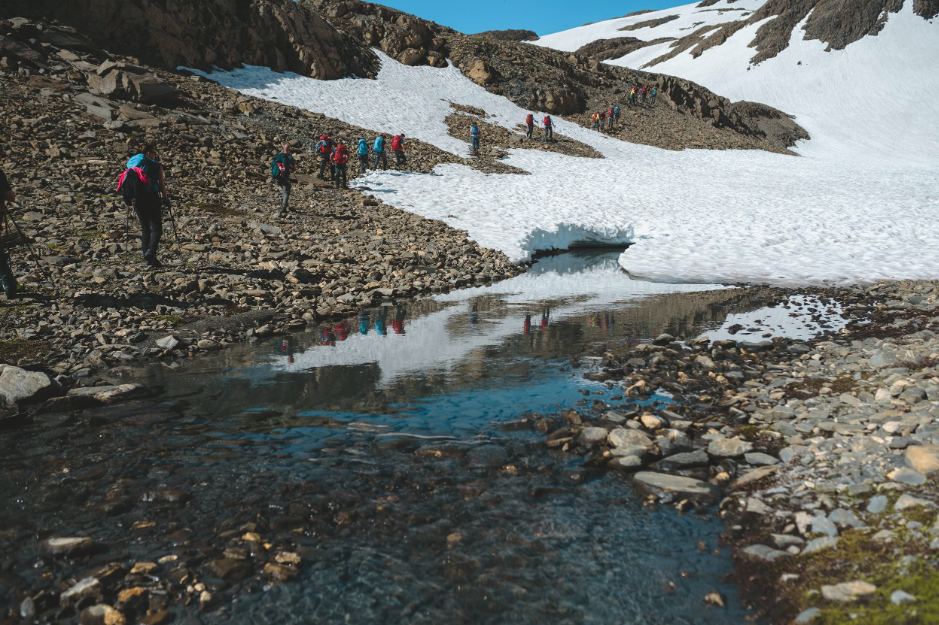
Among the many aspects of life that the mountains seem to be able to teach us about – both in work and in Change Management – the limiting factors make up one of the most important.
The mountains are able to teach, in uniquely severe ways, the importance of adaptability, of the ability to change plan according to specific conditions, in order to reach goals.
It’s an environment where controllable and incontrollable factors challenge each other and continuously try to find balance in ways that are unpredictable: technical preparation is challenged by unstable weather, long term plans by snowfalls, human ambition by the force of nature.
It’s a dance in which human and non-human hold hands and begin moving to the rhythm of the music.
With M4810 we have been made aware of this multiple times, and it will probably happen again. Every outing and every plan is challenged by chance: more than one outing has had to be rescheduled due to rain, more than one route has had to be altered due to snow or a change in some external factor.

When a summer that was colder than usual covered the mountains with a late snowfall in June, our plan to conquer the Petit Mont Blanc had to be reviewed and changed to Pointe Léchaud. And now that we are approaching our final goal, the Mont Blanc, this will be even more so the case.
It may seem like a tormenting thought.
A condition that leaves a lot to chance, that decides the success or failure of a mission like M4810 based on fate and not human ingenuity.
But this isn’t the case.
The work put in is more ingenuous than technical. It’s about being able to foresee the variables that are predictable, about studying alternative plans: a unique exercise in long term vision and analysis.
And this is the biggest challenge, a lesson to learn both for life and for work: being able to change plans, instead of persisting on an unattainable path, is synonym for success, wisdom, and ingenuity.
It implies learning to accept the responses that a process provides, being humble and wise enough to be able to read it and understand what is to be learned. Limiting factors are reality, as much in the mountains as in life, and knowing how to adapt to the context is essential in order to generate value. In the end, this is what has driven human evolution since the beginning of time.
Mountaineering is an activity that can become extreme and that can come dangerously close to becoming hubris, the excessive push of the ego that can lead to neglect of safety and common sense. The risk is of becoming “conquistadors of the useless”, as defined by Lionel Terray, with a positive and negative connotation: of searching for human limit, but also of the uselessness of overcoming it when the price to pay is excessive.
And this is what we learn in the mountains with M4810 – what we bring home to our daily work. The adaptability process is worth more than the peak and the challenge is multi-faceted: it’s external but also internal, linked to our commitment towards our decisions and convictions, with the risk of falling into heuristic traps along the way.
Experimenting with a new, different, and potentially hostile environment helps to develop this essential attitude. Not the single capacity of achieving a result (like reaching the peak or closing a project), but of being able to do so in an intelligent and measured way.
This is the real success.
A mindset geared towards sustainable growth, value, and long term orientation and not the immediate satisfaction of a need.
In order to be able to help the leaders of organisations do it as well as possible, we’re experimenting it first and foremost on ourselves.





